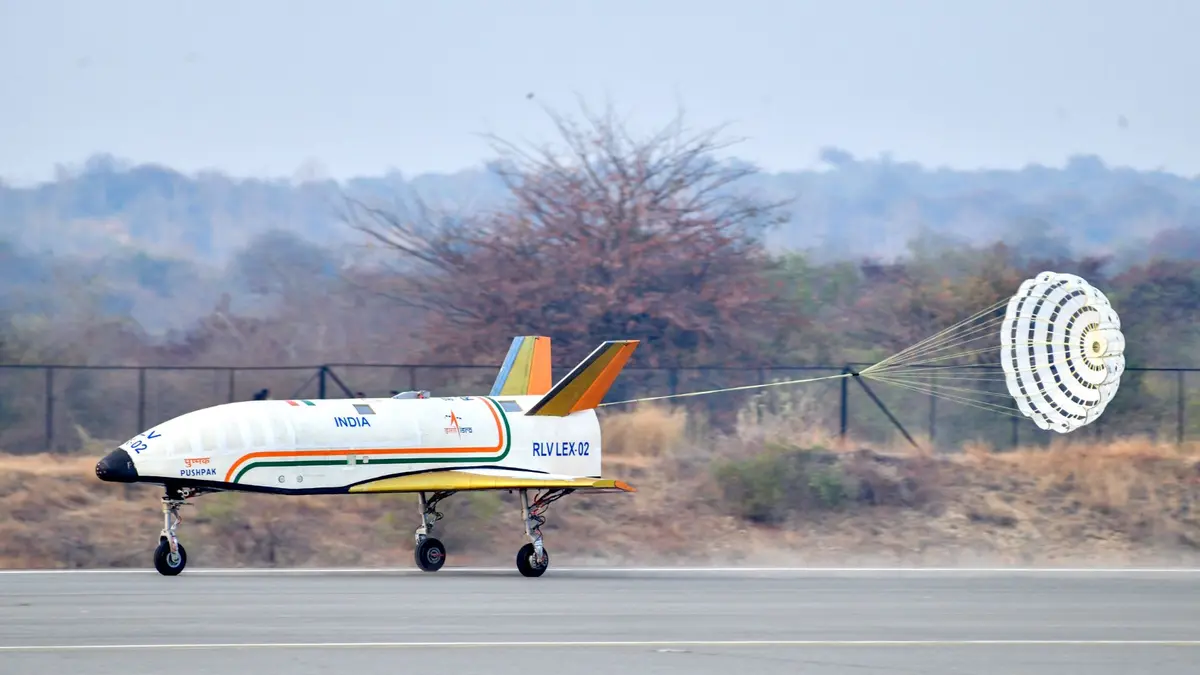India Achieved something big for an ambitious project to develop reusable launch vehicles (RLVs). The winged rocket, about the size of an SUV and nicknamed “Pushpak” or “RLV LEX-02”, successfully landed on a runway in Karnataka after a test flight.
The chairman of ISRO, S. Somanath, praised the mission for its “excellent and precise” outcomes. The space agency proudly declared that ISRO had succeeded once more!
In this real-world simulation, the “Pushpak” was dropped from an Air Force helicopter. It autonomously landed, replicating the conditions of a real return from space. ISRO explained that the winged vehicle approached the runway on its own, making adjustments as needed. It landed accurately on the runway and stopped using its brake parachute, landing gear brakes, and nose wheel steering system.
This is Pushpak’s third flight, which shows that it can land autonomously even in more difficult situations. It will probably take a few more years before Pushpak is used for real missions. But every successful test brings India a step closer to its goal of making space launches affordable and sustainable.
As this is one of the best achievements this happiness is justified for them because they have done such a thing which was very difficult but not impossible. ISRO has done something difficult, but nothing is impossible for them.
RLV-LEX-02 Experiment:
🇮🇳ISRO nails it again!🎯Pushpak (RLV-TD), the winged vehicle, landed autonomously with precision on the runway after being released from an off-nominal position.
🚁@IAF_MCC pic.twitter.com/IHNoSOUdRx
— ISRO (@isro) March 22, 2024
Furthermore, vehicles like Pushpak could transform space activities. They might refuel satellites while in orbit or retrieve and repair old satellites, which could reduce the issue of space debris.
10 Years of experimentation/trials/testing
The Pushpak project showcases India’s commitment to space innovation. For the last ten years, numerous engineers and scientists have worked on its development. In 2016, the RLV took off from Sriharikota and landed successfully on a simulated runway in the Bay of Bengal. However, it was not recovered as per the plan and sank into the sea.
On April 2, 2023, another successful test took place at the Chitradurga Aeronautical Test Range of the defence establishment. Known as the RLV-LEX, the winged rocket was lifted into the sky by an Indian Air Force (IAF) Chinook Helicopter, suspended beneath it, and then released to land autonomously, without any problems.
Pushpak has made successful landings in previous flights in 2016 and 2023, showcasing India’s consistent advancement in reusable space shuttle technology.
Drawing inspiration from the mythical Pushpak Viman, a flying chariot, India’s reusable space shuttle reflects the country’s goal of achieving self-sufficiency in space technology. With ongoing achievements and significant government backing (more than ₹100 crores in investment, approximately 12 million USD), India aims to become a leader in reusable launch technology, joining the ranks of pioneering nations.
Source : ISRO and IAF



